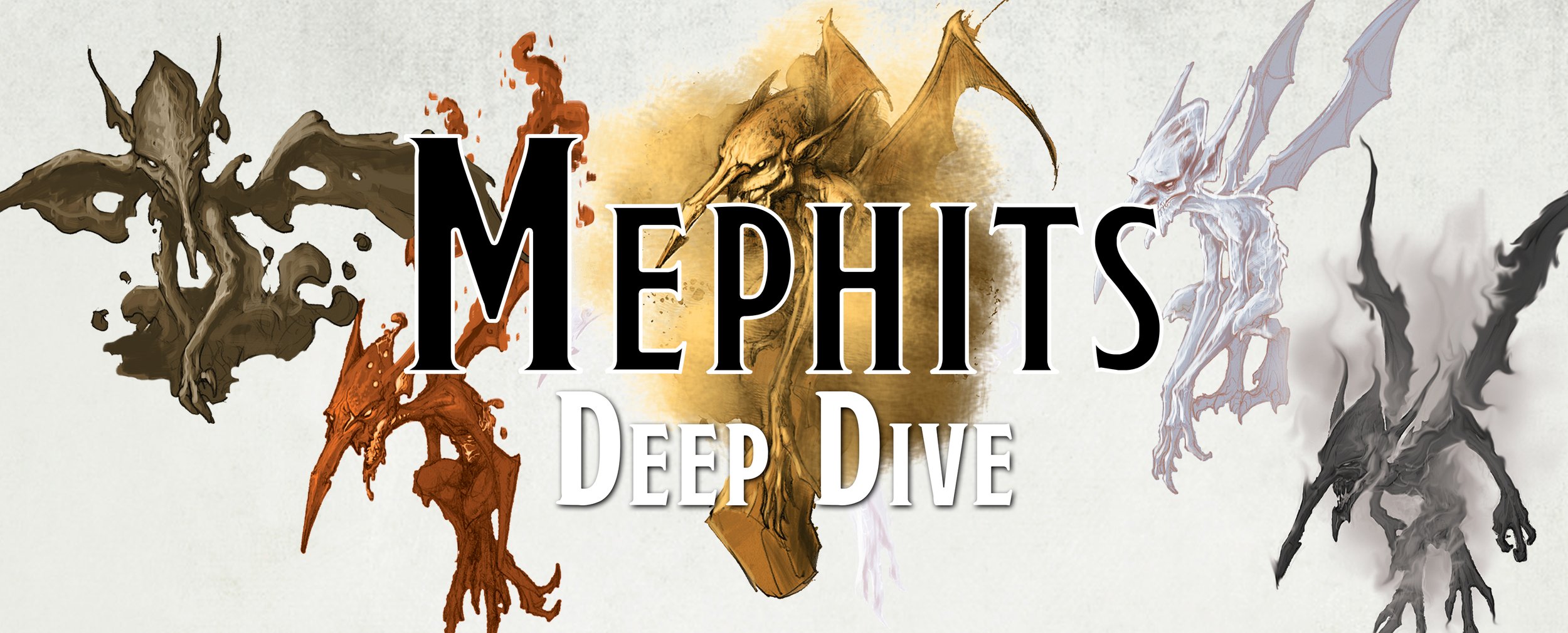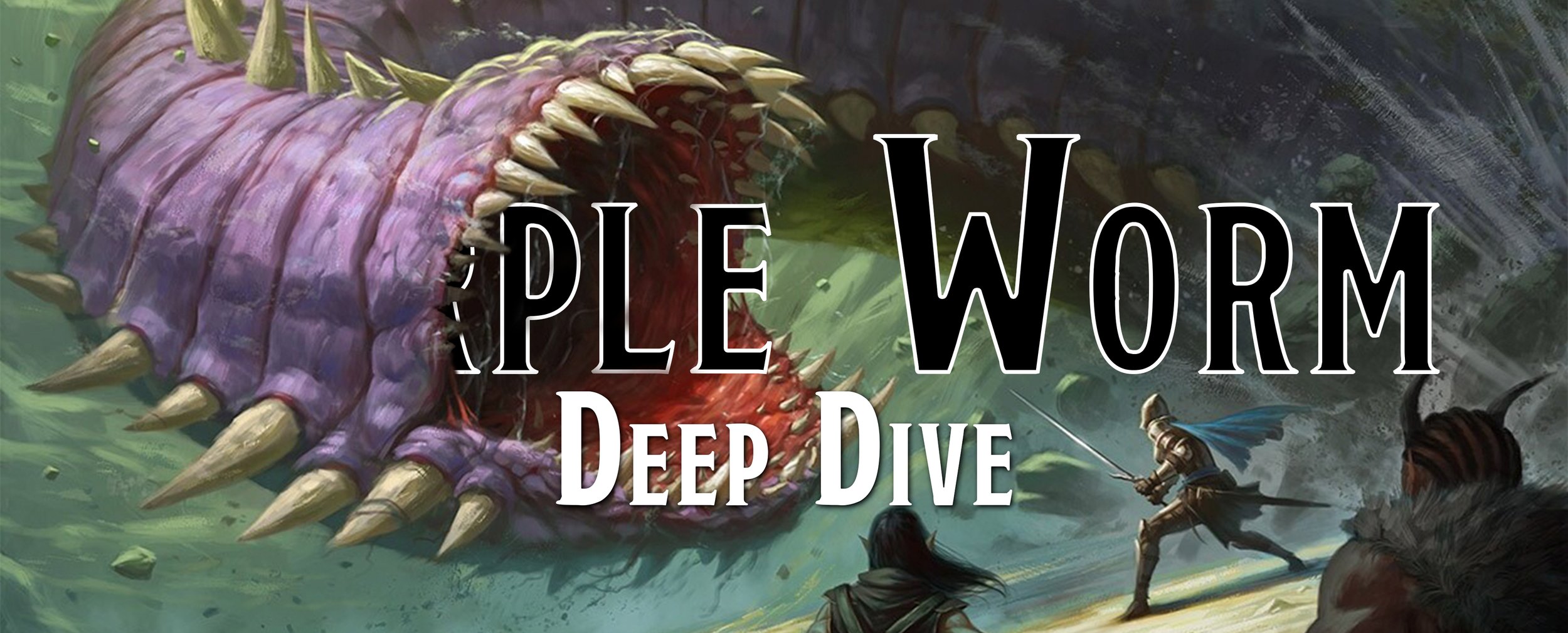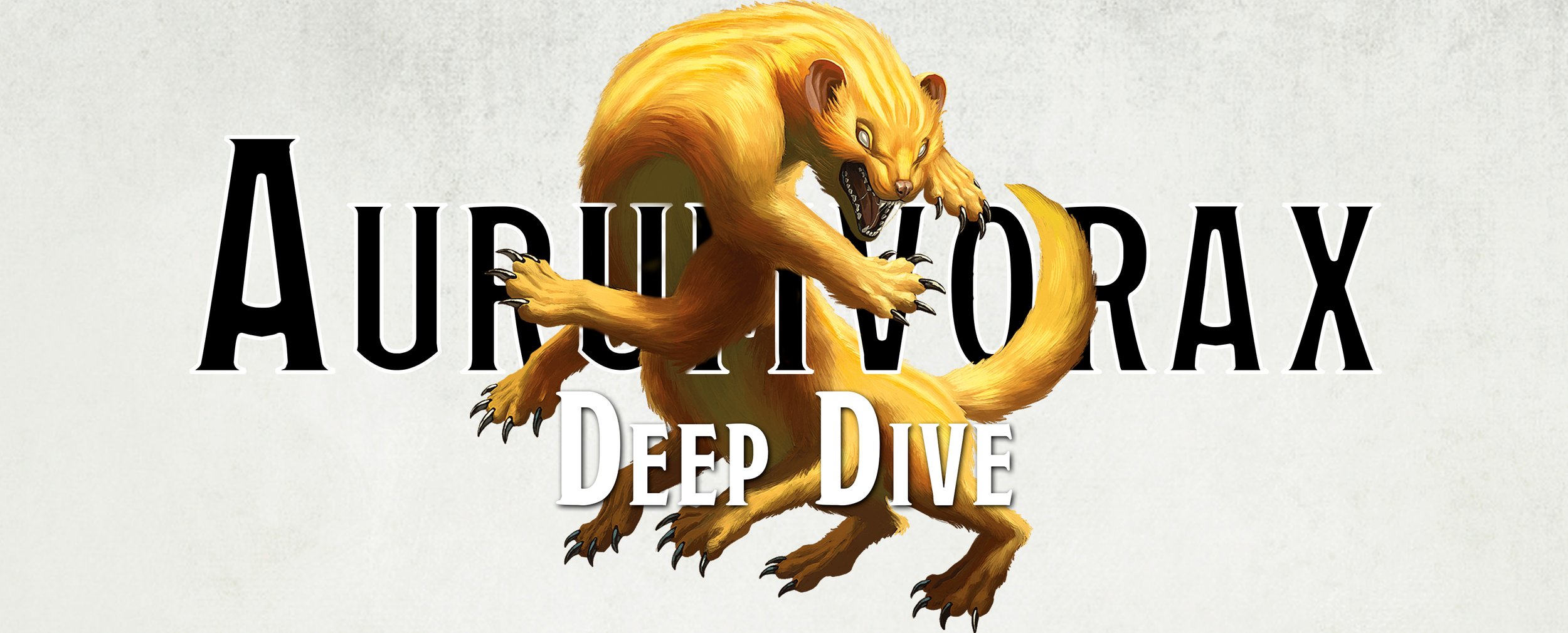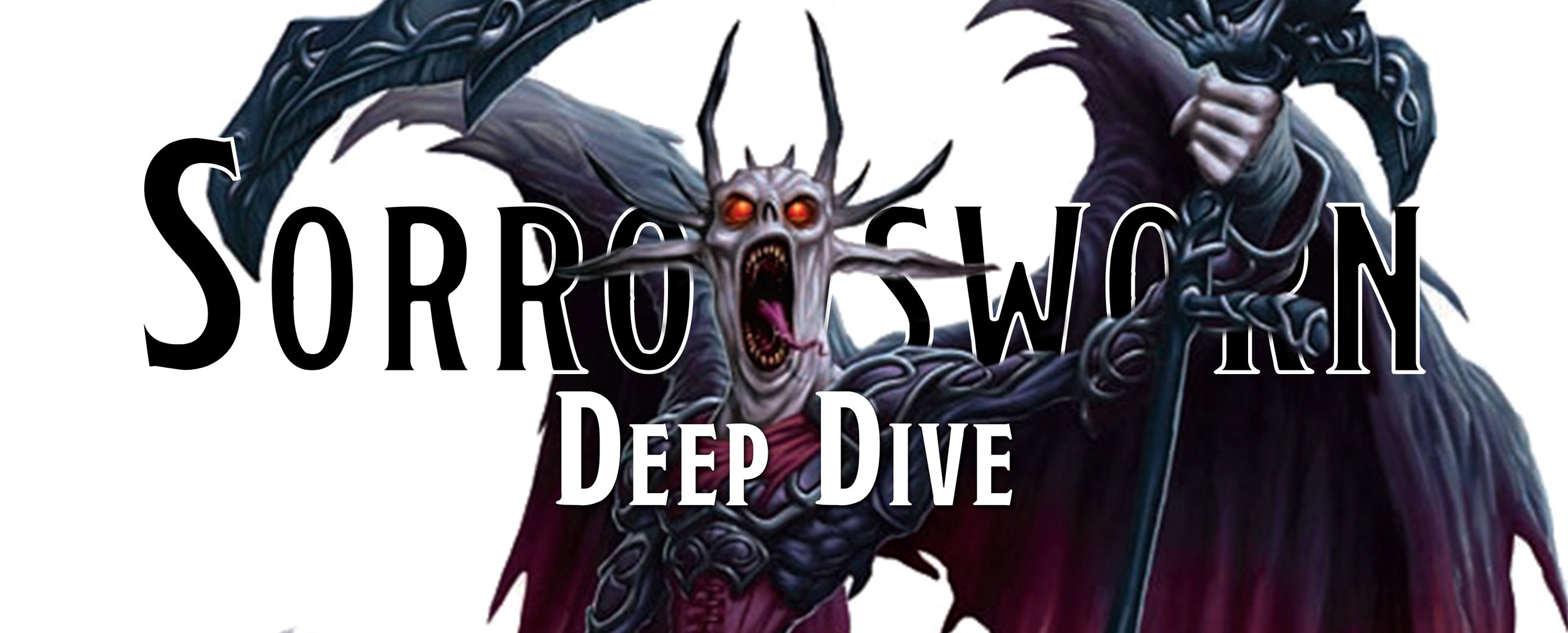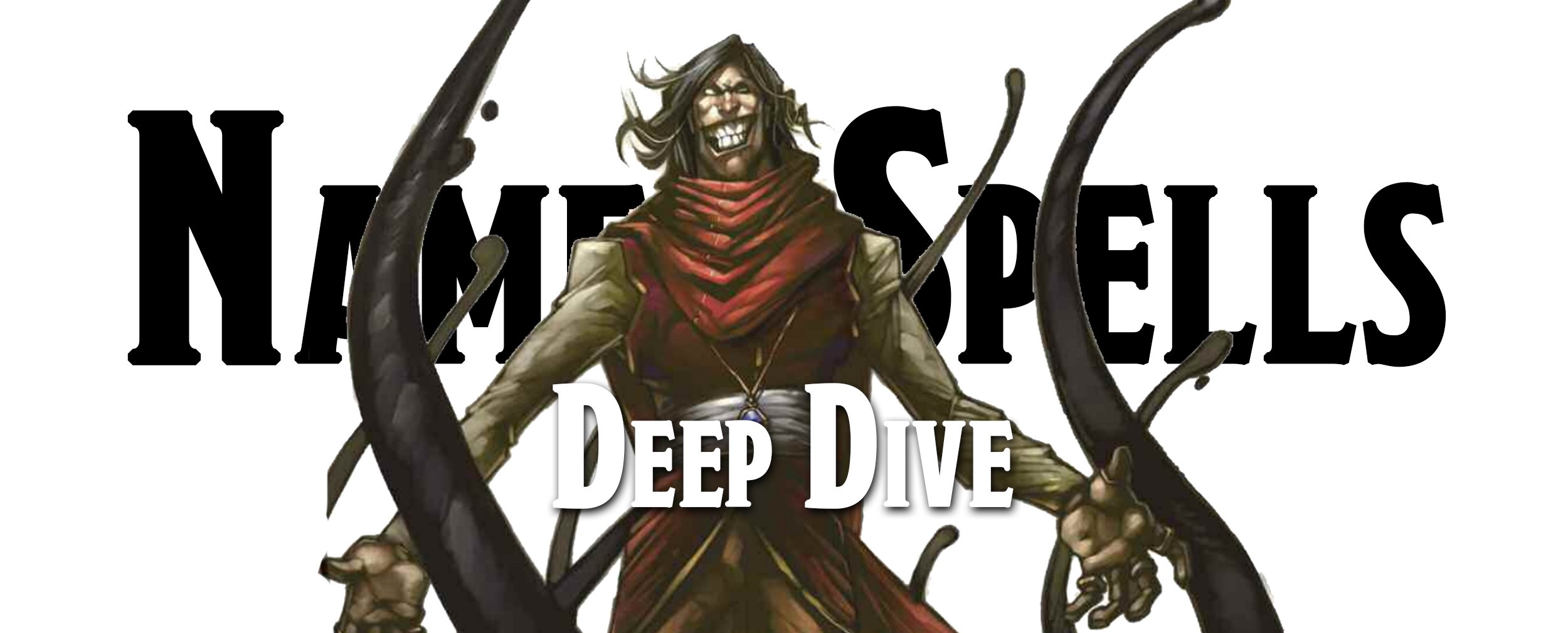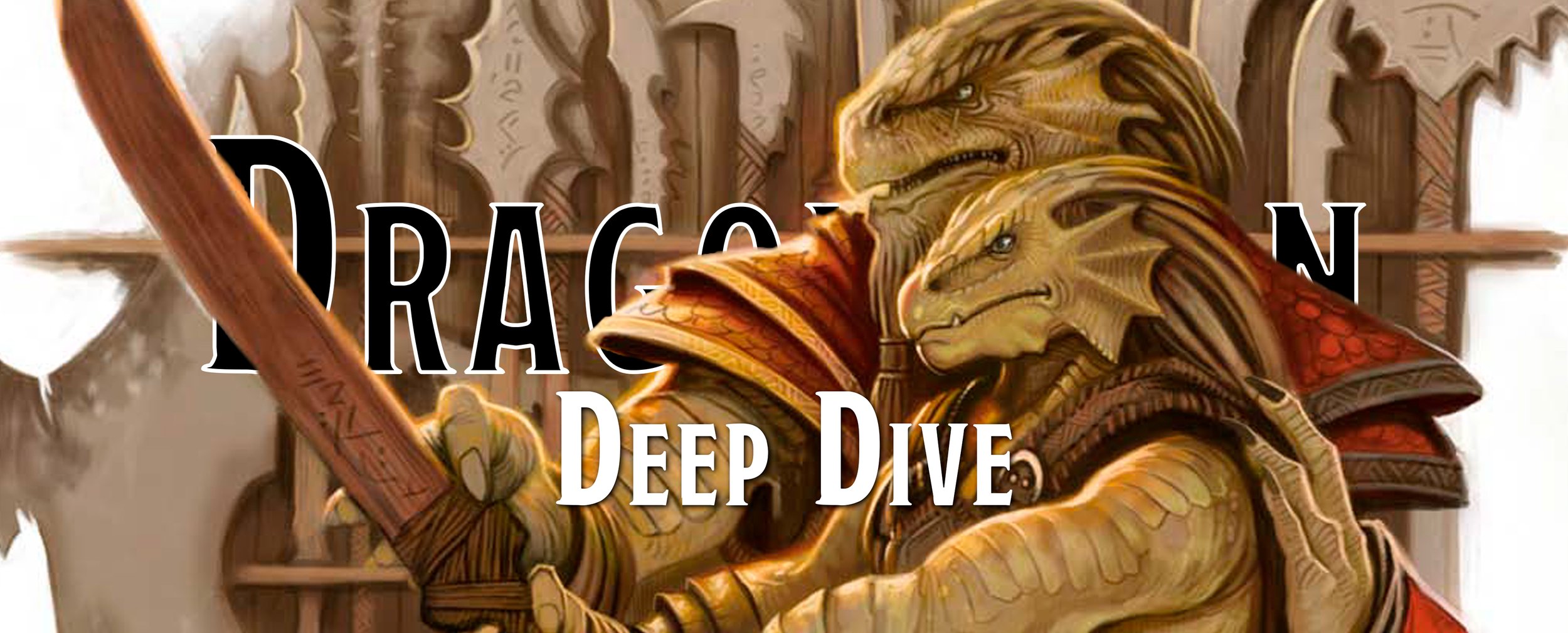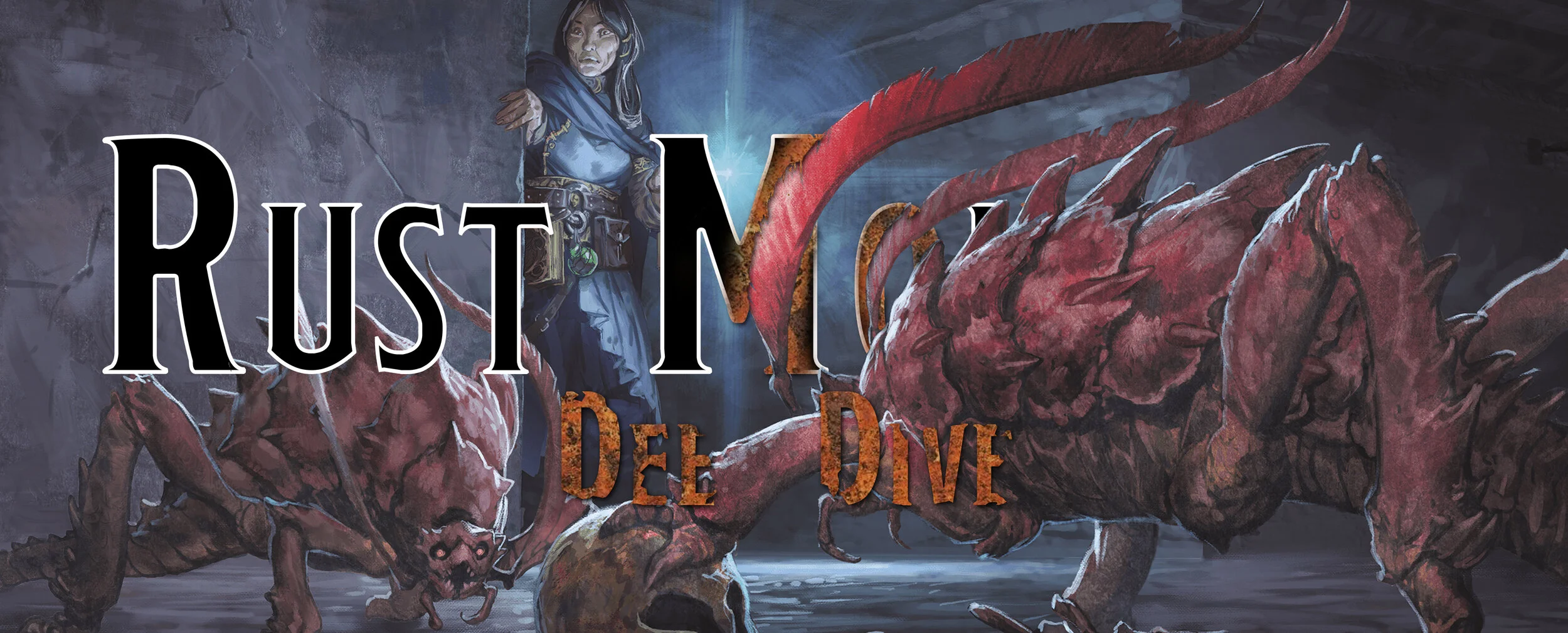Quick Dive - How to Read the 1st Edition Stat Block
We’ve been doing our Deep Dive series for over a year now and unless you played the earlier editions, you may not understand what all the information means on the stat blocks. One of us, Chris, has played 1st edition for close to 10 years and he still needs to look up what some of the old information means. This article will hopefully serve as a cheat sheet for the information found on those stat blocks.
A typical 1st edition stat block looks like this:
Frequency:
No. Appearing:
Armor Class:
Move:
Hit Dice:
% in Lair:
Treasure Type:
No. of Attacks:
Damage/Attack:
Special Attacks:
Special Defenses:
Magic Resistance:
Intelligence:
Alignment:
Size:
Psionic Ability:
The only stat block carryover from the 1st edition to the current 5th edition is armor class. Now, that doesn’t mean that the rest of the items have no place in the 5th edition. Many of them remain in some fashion, being tailored to the game in its current form, while others are foreign to the person that has only played 5th edition. Hopefully, this will help explain what Treasure Type D is or provide you with a little more insight into how Hit Dice worked.
Frequency
Simply put, this is the chance a creature will be encountered in the region it lives in. Random monster encounter matrices were broken down by area type in AD&D, but with over 40 different matrices to work from it could get quite confusing. There was a matrix for everything type of region from Temperate and Sub-Tropical Conditions, Uninhabited/Wilderness Areas, Frog Subtable to Underwater Encounters in Large Bodies of Salt Water, Deep Water below 100 feet. I kid you not, these are both two examples of actual tables in the DMG.
Four frequencies appeared, each with a percentage chance that you and the party would run into one of these creatures. Common meant you have a 65% chance of encountering the creature, Uncommon was a 20% chance, Rare an 11% chance and Very Rare a 4% chance. It's stated in the Monster Manual that the probabilities are considered in each encounter matrix found in the DMG, but either I have a worse understand of math than I thought or that’s total bullshit. As far as I can tell, there was no rhyme or reason behind most of the encounter matrices. For example, on the Sub-Arctic Conditions matrix, you had a 5% chance of rolling up on a Mastodon when you were traveling in the plains. The Mastodon is listed with a common frequency for nearly any climate, from near arctic to tropical, as stated in the Monster Manual. You also have a 5% chance of encountering a White Dragon which is listed as uncommon, and a 5% chance of bumping into a Frost Giant, listed as a rare encounter creature. They may have considered the percentages, but they certainly didn’t put it into practice.
Number Appearing
Here’s a stat line I miss. Number appearing provides the DM with an average spread of how many creatures you will run into. Interestingly enough these numbers are only meant to apply to a single encounter with the creature. The term definition in the Monster Manual states that it is not recommended to use these numbers in establishing the population of a dungeon. AD&D had no encounter builder programs or CR numbers to work off of, so you had to consider more than just this number when creating an encounter. There’s a big difference in the level of difficulty if you run into 40 kobolds versus 400 kobolds.
Armor Class
I think we all know what armor class is, but for those wanting to know the AD&D definition, here you go:
Armor class describes the general type of protection worn by humans or humanoid creatures, protection inherent to the creature due to its physical structure or magical nature, or the degree of difficulty of hitting a creature due to its speed, reflexes, etc
Monster Manual, 1977
Move
Another pretty straightforward line item - the speed of any given creature. Movement was nowhere near as clear cut then as it is now (for example, a creature's move score may have been 18 feet, so how exactly does that translate when using minis and each square equals 5 feet), but that’s a topic for a different day. The fun part of this stat block item was deciphering the terminology they used. There were 5 types of movement that could be listed for a creature, and if a creature had two different types they’d be listed in some weird code instead of just listing in like a fly or swim speed. Let’s say our creature had a walking speed of 15 feet and another type of movement for 30 feet. Here’s how you translated the stat line:
15”/30” - 15 feet walking speed, 30 feet of flying speed
15”//30” - 15 feet walking, 30 feet swimming speed
15”(30”) - 15 feet walking, 30 feet burrowing speed
15”*30” - 15 feet walking, 30 feet speed when in a web
Hit Dice
Hit dice were listed instead of hit points, forcing the DM to roll total hit points for each creature they threw at you. No matter the size of the creature, Hit Dice were always a d8 unless otherwise specified.
% in Lair
Finding a creature in its lair had many different ramifications than just bumping into them as they were wandering through the forest. If a creature was not encountered in its lair, the chances of it having treasure were slim to none. Only creatures listed as carrying ‘individual’ treasure would have some of their shiny gold or magical goodies on their person. We’ll get into treasure next, but the difference between individual treasure and lair treasure was huge. Using the goblin as an example, a wandering goblin would have 3-18 pieces of silver on their person, when found in their lair you’d had a chance of finding copper, silver, gems, jewelry, and magic items.
It is also important to note that when you encountered a creature in its lair, the number appearing would most likely increase. There was also a greater probability that you would find a wider variety of creatures types in their layer. Let’s go back to our friend, the goblin. When you ran into 40 or more goblins, there would be a leader and 4 assistants who would have maximum hit points. If you stumbled into their lair of 400, the was a goblin chief and 2-8 bodyguards with double normal HP and better AC and a 25% increase in damage, females equal to 60% of the total of males (females do not fight) and 5-30 huge wolves at least 60% of the time.
Treasure Type
Want a wordy answer to the question ‘What is Treasure Type”? Here’s what the Monster Manual has to say about this line item.
Refers to the table which shows the parameters for various types of valuables which the monster in question might possess. If individual treasure is indicated, each individual monster of that type will carry, or possibly carry, the treasure shown. Otherwise, treasures are only found in the lairs of monsters, as explained above. Note also that although an encounter occurs in a monster's lair, and the monster possesses some treasure type, this does not automatically mean that the adventurers will gain treasure by defeating the monster. Most treasure types show probabilities for various kinds of wealth to occur in the treasure of the monster. If subsequent dice rolls indicate that that form of treasure is not in the monster's trove, then it is not there, and it is quite possible to come up with no wealth (including magical items) of any sort in a monster's lair despite the fact that a treasure type is indicated. Finally, it must be stated that treasure types are based upon the occurrence of a mean number of monsters as indicated by the number appearing and adjustments detailed in the explanatory material particular to the monster in question. Adjustment downwards should always be made for instances where a few monsters are encountered. Similarly, a minor adjustment upwards might be called for if the actual number of monsters encountered is greatly in excess of the mean. The use of treasure type to determine the treasure guarded by a creature in a dungeon is not generally recommended. larger treasures of a given type are denoted by a multiplier in parentheses (X 10, etc.) - not to be confused with treasure type X
Monster Manual, 1977, pg. 5
Did that explain it for you or just make you fall asleep? It’s an extremely long-winded explanation that could be easily summed up by saying that treasure types are guidelines to follow depending on where you encounter a specific monster. If you are interested in what each letter found on the stat line translates into, you can find the complete table by clicking on one of the buttons below:
Number of Attacks/Damage per Attack
Your basic attack information. These two line items stated the number of attacks the creature had and the damage each would do. The problem with this was you had to hunt through the creature descriptive text to find out which attack did what damage. Using our pet Mastodon as an example, its attack lines are as follows:
No. of Attacks: 5
Damage/Attack 2-16/2-16/2-12/2-12/2-12
Monster Manual, 1977, pg. 65
It’s great that I know it has 5 attacks, but what are those attacks exactly? Welp, you'll have to slide down to the descriptive text to find out they are 2 tusk attacks, 1 trunk attack, and 2 forefeet attacks. If the creature used a weapon, the damage would be listed as “By Weapon Type”, and you’ll have to once again go hunting through the text to find out what weapons they were able to use and then pull out your PHB and look up the damage type.
Special Attacks/Defenses
I have no idea why these are line items on the stat block. The definition found in the Monster Manual states that they detail attack modes like dragon’s breath, magic use, etc, with the full explanation of the mode being detailed in the creature description. The problem is, 90% of the time the stat line either reads Nil or See Below.
Magic Resistance
Like movement, explaining how magic resistance is a topic for another day. Simply put, the magic resistance stat line indicates the percentage chance of any spell failing in the monster's presence. 5th edition is much kinder to its players and many times when a spell fails, the creature will take half damage. No such luck in AD&D. Resistance is based on the spell being cast by a magic-user of 11th level, and it must be adjusted upwards or downwards by 5% for each level above or below the magic-user casting the spell. For example, a magic resistance of 95% means that a 10th level magic-user is screwed, having no possibility of affecting the monster with a spell, while a 12th level magic-user has a 10% chance. If you thought 5th edition has a lot of math, I hope by this point you are starting to understand how simple it is compared to this edition.
To make your character’s life even more difficult, even if a spell does take effect on a creature, it is entitled to normal saving throws and the natural magic resistance of a creature. Certain creature’s resistance had an effect on certain existing spells such as hold portal, where it indicates the probability of creature’s resistance ending the existing spell. Ouch.
Intelligence
There were no ability scores for monsters back in the day, and since Gary G. and crew deemed intelligence an important factor in how the DM should role-play their creatures, it got a line item on the stat block. The scores were roughly equivalent to a character’s intelligent score, and were labeled as follows:
0 Non-intelligent
1 Animal intelligence
2-4 Semi-intelligent
5-7 Low intelligence
8-10 Average (human) intelligence
11-12 Very intelligent
13-14 Highly intelligent
15-16 Exceptionally intelligent
17-18 Genius
19-20 Supra-genius
21+ Godlike intelligence
Now what exactly the difference is between a very intelligent creature and an exceptionally intelligent creature is we have no idea. We can only assume it means the more intelligent a creature is, the lower your guilt should be about using every trick they have to kill the player.
Alignment
No matter your current feelings on alignment, it played an important part in AD&D. Alignment played an important role in determining the general behavior of a creature when encountered, serving as a guideline for a creature’s good or evil intent. The game was in its infancy then and without 40 plus years of history, lore, and playing experience behind it. We didn’t know that a red dragon was meant to be played as an evil anarchist (chaotic evil) or that a titan did whatever the hell it wanted when it wanted, but it usually tried to do the right thing (chaotic good). Whether or not you think alignment still has a place in the game today, it was important to back then in helping the DM figure out how to role-play a creature in Dungeons and Dragons.
Size
All monsters cam in three sizes. Small (S), Medium (M), or Large (L). Small was defined as smaller than a typical human. A medium creature was approximately man-sized, between 5 and 7 feet in height. Large was described as bigger than man-sized “in one way or another'' and having a greater mass than a normal human.
Psionic Ability
What an absolute mess Advanced Dungeons & Dragons psionics is. If you thought the Treasure Type chart was overly complicated, you ain’t seen nothing yet. The PHB provides the corresponding psionic abilities, along with definitions of said abilities to the letter codes that are found on the psionic ability stat line in the Monster Manual. Abilities are broken down into two types, Attack and Defense Modes.
The DMG has 5 major attack/defense charts on psionics and 4 what we’ll call minor charts. There is so much scattered information that it’s hard to find and even harder to follow. With such a mess of rules and definitions, I hope that this will provide you with a baseline of knowledge regarding psionic abilities in AD&D. Below you can find links to the psionic information found in the PHB.
We hope this has been informative and will assist you in the translation of the stat blocks for the 1e creatures when you read our Deep Dive posts. While we may not be able to help with the godawful art from this edition, at least now you’ll have a clear sense of what Treasure Type means.
Got something you’d like to see a Deep Dive on?
Let us know in the comments below!
If you enjoy our Deep Dive series consider
supporting us on Patreon and following us on Twitter!






















